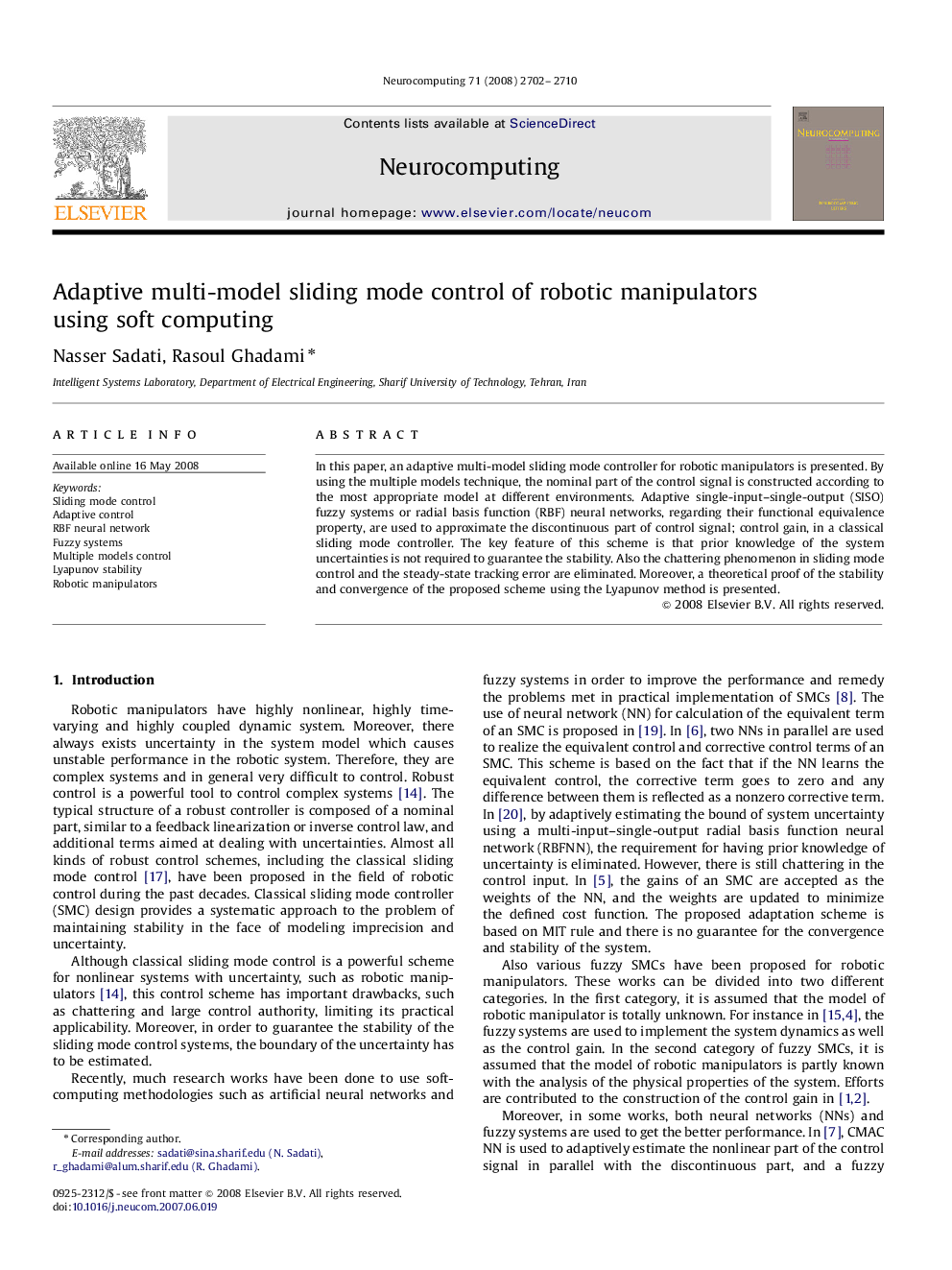| Article ID | Journal | Published Year | Pages | File Type |
|---|---|---|---|---|
| 409084 | Neurocomputing | 2008 | 9 Pages |
In this paper, an adaptive multi-model sliding mode controller for robotic manipulators is presented. By using the multiple models technique, the nominal part of the control signal is constructed according to the most appropriate model at different environments. Adaptive single-input–single-output (SISO) fuzzy systems or radial basis function (RBF) neural networks, regarding their functional equivalence property, are used to approximate the discontinuous part of control signal; control gain, in a classical sliding mode controller. The key feature of this scheme is that prior knowledge of the system uncertainties is not required to guarantee the stability. Also the chattering phenomenon in sliding mode control and the steady-state tracking error are eliminated. Moreover, a theoretical proof of the stability and convergence of the proposed scheme using the Lyapunov method is presented.
